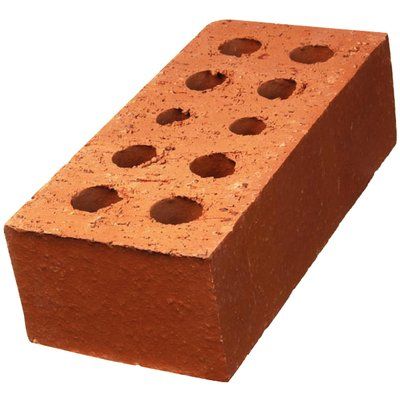A brick is a block of ceramic material used in masonry construction, usually laid using various kinds of mortar. It has been regarded as one of the longest lasting and strongest building materials used throughout history. There are several types of bricks to be used in construction site. We are going to introduce some types of bricks and their properties.
Bricks Types
- Sand Lime Bricks (Calcium Silicate Bricks)
- Engineering Bricks
- Concrete Bricks
- Fly ash Clay Bricks
- Common Burnt Clay Bricks
Common burnt clay bricks
Common burnt clay bricks are formed by pressing in molds. Then these bricks are dried and fired in a kiln. Common burnt clay bricks are used in general work with no special attractive appearances. When these bricks are used in walls, they require plastering or rendering.
Sand Lime Bricks
Sand lime bricks are made by mixing sand, fly ash and lime followed by a chemical process during wet mixing. The mix is then molded under pressure forming the brick. These bricks can offer advantages over clay bricks such as:
- Their color appearance is grey instead of the regular reddish color.
- Their shape is uniform and presents a smoother finish that doesn’t require plastering.
- These bricks offer excellent strength as a load-bearing member.
Engineering Bricks
Engineering bricks are bricks manufactured at extremely high temperatures, forming a dense and strong brick, allowing the brick to limit strength and water absorption. Engineering bricks offer excellent load bearing capacity damp-proof characteristics and chemical resisting properties.
Concrete Bricks
Concrete bricks are made from solid concrete. Concrete bricks are usually placed in facades, fences, and provide an excellent aesthetic presence. These bricks can be manufactured to provide different colors as pigmented during its production.
Fly Ash Clay Bricks
Fly ash clay bricks are manufactured with clay and fly ash, at about 1,000 degrees celcius. Some studies have shown that these bricks tend to fail poor produce pop-outs, when bricks come into contact with moisture and water, causing the bricks to expand.
Bricks Advantages
There are many advantages when bricks are used as part of the construction. The following list presents some of the most common advantages when using bricks instead of other construction materials.
i) Aesthetic
- Bricks offer natural and a variety of colors, including various textures.
ii) Strength
- Bricks offer excellent high compressive strength.
iii) Porosity
- The porosity of bricks in attributed to its fine capillaries. The ability to release and absorb moisture is one of the most important and useful properties of bricks, regulating temperatures and humidity inside structures.
iv) Fire Resistance
- When prepared properly a brick structure can give a fire protection maximum rating of 6 hours.
v) Sound Insulation
- The brick sound insulation is normally 45 decibels for a 4.5 inches brick thickness and 50 decibels for a nine inch thick brick.
vi) Insulation
- Bricks can exhibit above normal thermal insulation when compared to other building materials. Bricks can help regulate and maintain constant interior temperatures of a structure due to their ability to absorb and slowly release heat. This way bricks can produce significant energy savings, more than 30% of energy saving, when compared to wood.
vii) Wear
- A brick is so strong, that its molecular composition provides excellent wear resistance.
viii) Efflorescence
- Efflorescence forms on concrete structures and surfaces when soluble salts dissolved in water are deposited and accumulated on surfaces forming a visible scum.
ix) Durability
- Brick is extremely durable and perhaps is the most durable man-made structural building material so far.






























